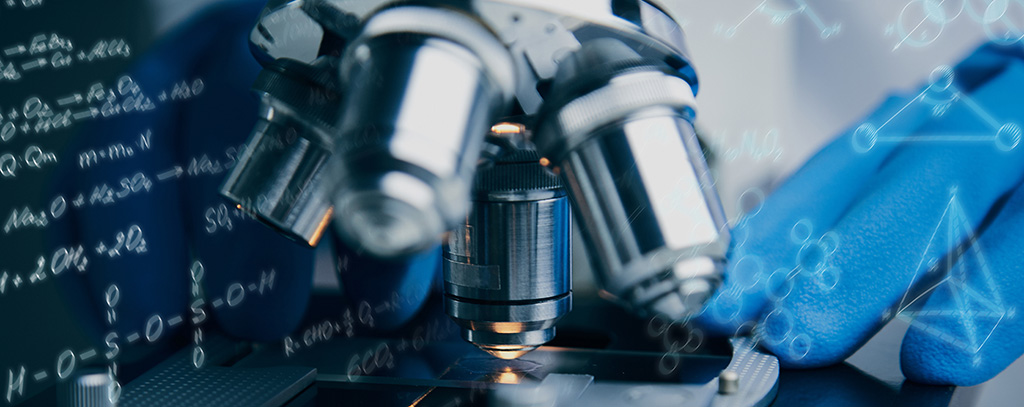


Drug Testing in Schools: Ensuring Safe Learning
September 3, 2023


Drug Testing & Workplace Productivity: Insights, Stats
September 5, 2023Benefits and Limitations is an essential read for anyone in the corporate world. For business owners and HR personnel, this knowledge could be essential.
Navigating drug testing protocols can feel like walking through a minefield. The fear of making mistakes is real and understandable.
You might have heard about rapid drug testing kits as an efficient solution. But are they really as good as people claim?
This post dives deep into the benefits and limitations of rapid drug testing kits. Let's get to the bottom of this.
Table of contents
- Overview of Rapid Drug Testing Kits
- Advantages of Rapid Drug Testing Kits
- Disadvantages of Rapid Drug Testing Kits
- Drugs Detected by Rapid Drug Testing Kits
- Accuracy and Reliability of Rapid Drug Testing Kits
- Cost-Effectiveness of Rapid Drug Testing Kits
- Wrapping Up: Rapid Drug Testing Kits
- FAQs in Relation to Benefits and Limitations
- Conclusion
Overview of Rapid Drug Testing Kits
Rapid drug testing kits, commonly known as reagent test kits, have emerged as crucial tools in various sectors. They are designed to detect the presence of controlled substances swiftly and conveniently. However, their usage for drug checking raises legal questions due to concerns about accuracy and reliability.
The Working Mechanism of Rapid Drug Testing Kits
These kits function by reacting with specific chemicals present in a sample - typically urine or saliva - producing color changes if certain substances are detected. This makes them valuable assets for early public health response initiatives against substance abuse.
In recent years, these tests have been increasingly employed in environments like workplaces and schools where immediate results hold importance. Some businesses even accept drug checking as part of their safety protocols.
The Controversies Surrounding Rapid Drug Testing Kits
Despite the advantages they offer, rapid drug-checking services remain controversial owing to concerns about false positives and negatives. Critics argue that inaccurate results could lead individuals into unnecessary trouble or provide a false sense of security regarding high potency synthetic opioids or other dangerous drugs.
Some advocates are proposing more comprehensive testing methods such as HPLC or TLC to address the controversy, which can identify unknown chemicals for better risk assessment but require specialized equipment. These methods can identify unknown chemicals allowing better risk assessment but require specialized equipment not readily available outside fixed laboratories.
The Role Of Technology In Enhancing Accuracy And Speed
- New technologies aim at enhancing efficiency and accuracy while reducing errors associated with human interpretation when it comes to rapid drug tests. Mobile laboratories equipped with advanced detection devices can perform onsite checks, providing real-time data on drug availability within communities. This aids early warning systems against potential outbreaks linked to synthetic drug usage.
Advantages of Rapid Drug Testing Kits
The advent and adoption of rapid drug testing kits has revolutionized the process for companies needing regular or sporadic drug checking. These tools offer a host of benefits including speed, convenience, detection capabilities, and affordability.
Ease-of-Use: A Key Advantage
Rapid tests are easy to administer without specialized training or mobile laboratories, which makes them ideal for on-site testing approaches at workplaces, educational institutions, and even drug consumption rooms. The immediacy allows organizations to act swiftly if a positive result emerges.
- Quick Results: Most rapid drug tests provide results within 5-10 minutes, enabling swift decision making, especially when dealing with high potency synthetic opioids.
- Broad Detection Capabilities: These kits can detect an array of controlled substances, raising legal questions from marijuana to cocaine among others, while some advanced models also identify synthetic drugs along with unknown chemicals, allowing effective early warning systems against new threats posed by evolving illicit substances.
- Affordability: Compared with other methods like high-performance liquid chromatography (HPLC) or thin-layer chromatography (TLC), these test-kits prove significantly more cost-effective, particularly attractive option for small-medium sized businesses who need to maintain a safe working environment free from substance abuse issues but have limited budgets.
- Ease-of-use remains another key advantage offered by these tools over fixed laboratories that may require trained personnel along with significant setup times and costs associated therein.
Detection Capabilities Broadened With Technology
Advanced technology enhances their capabilities further, enabling simultaneous multiple-drug-detection; vital in helping avoid overdose due to poly-drug taking behavior.
These advantages collectively contribute towards maintaining sober environments, thereby positively impacting overall organizational productivity levels and minimizing potential liabilities arising out of accidents caused by intoxication in the workplace.
Disadvantages of Rapid Drug Testing Kits
Rapid drug testing kits, despite their many advantages, do come with a set of drawbacks. The primary concern is the potential for false positives and negatives.
Potential for False Positives and Negatives
Cross-reactivity in rapid drug tests can lead to inaccurate results. This phenomenon occurs when substances that mimic controlled substances raise legal questions by triggering positive test outcomes. For instance, certain medications or food items may result in a false positive on these tests.
In contrast, synthetic drugs such as high potency synthetic opioids might not be detected by some reagent test kits, leading to false negatives - an issue which poses serious implications, particularly where workplace safety is paramount. (NCBI)
Limited Range of Drugs Detected
A significant disadvantage associated with most rapid drug-checking services is that they provide individuals with only limited coverage regarding the detection of specific drugs. While they are effective at detecting common illicit substances like marijuana and cocaine, newer designer drugs or unknown chemicals that allow users to evade detection often slip through unnoticed.
This becomes especially concerning considering the rising popularity and availability of synthetic drugs, which frequently escape traditional testing approaches employed by fixed laboratories or mobile laboratories using techniques such as thin-layer chromatography or high-performance liquid chromatography. (PubMed)
No Quantitative Analysis
Another limitation lies within the inability of rapid drug testing to offer quantitative analysis. It simply indicates whether a substance has been consumed during its detectable window period but fails to determine how much was taken. This poses challenges when trying to establish patterns related to excessive usage that could potentially progress towards addiction.
Drugs Detected by Rapid Drug Testing Kits
Rapid drug testing kits are versatile tools that can detect a broad spectrum of controlled substances. These include both natural and synthetic drugs, with an increasing focus on high potency synthetic opioids due to their rising prevalence in public health issues.
Natural Substances: From Marijuana to Opiates
The conventional targets for workplace drug tests have been naturally derived substances such as marijuana, cocaine, and opiates. The unique chemical signatures of these compounds make them easy pickings for reagent test kits, which typically use thin-layer chromatography or similar methods.
However, the detection of these substances raises legal questions around drug control laws and employee rights - topics companies need to navigate carefully when implementing any form of drug-checking services.
Synthetic Drugs: A Growing Concern
Beyond natural narcotics, rapid testing kits also screen for various synthetic drugs like methamphetamines alongside designer stimulants such as MDMA (Ecstasy) and new psychoactive substances (NPS). With the rise in availability and consumption of synthetics within society at large, it has become increasingly important that workplaces incorporate effective strategies into their regular testing approaches.
Opioids: A Public Health Crisis
A particularly alarming category detected by modern rapid test devices is opioids - especially potent synthetics like fentanyl known for contributing significantly towards overdose risks. According to CDC data, opioid overdoses accounted for nearly 70% of all substance-related deaths during 2018, making it critically essential for employers to accept the controversial but necessary step of integrating checking technologies into routine screenings.
Benzodiazepines & Barbiturates: Old But Not Forgotten
Rapid screening instruments not only flag benzodiazepines commonly prescribed yet often misused recreationally, leading to potentially hazardous situations in work environments where safety is of paramount importance, but they are also capable of detecting barbiturates.
Accuracy and Reliability of Rapid Drug Testing Kits
The precision and dependability of rapid drug testing kits are crucial in the realm of controlled substances detection. These factors directly impact the credibility of results, which forms a cornerstone for informed decisions around drug-checking services.
Assessing Accuracy
Rapid tests, such as reagent test kits, function by instigating chemical reactions with specific drugs. A color change indicates whether certain substances exist or not. However, these tests provide qualitative data only - they confirm substance presence but don't quantify it.
This limitation can raise legal questions due to potential false positives from cross-reactivity with other chemicals or medications. Also, high potency synthetic opioids may escape detection if their concentrations fall below the kit's threshold limit.
Evaluating Reliability
Rapid tests offer immediate results; however, various elements like improper handling or storage conditions that could degrade reactive agents over time might affect reliability. Reading result interpretations also requires training, without this expertise there's potential for error in interpreting outcomes.
Unlike fixed laboratories employing advanced techniques like high-performance liquid chromatography, mobile labs using rapid tests cannot identify unknown chemicals, allowing precise risk assessment necessary for an early public health response.
Bridging The Gap: Confirmatory Tests
To boost accuracy while maintaining speed benefits derived from rapid testing approaches, consider implementing confirmatory examinations. For instance, thin-layer chromatography offers more comprehensive information than simple colorimetric assays by separating sample components before identification — reducing chances of misinterpretation caused by complex mixtures.
Similarly, gas chromatography-mass spectrometry (GC-MS) provides accurate identification even at trace levels a valuable feature considering the rising availability of synthetic drugs. While pricier than primary screening tools, these methods deliver robust evidence where stakes are high such as workplace safety evaluations or clinical settings.
Cost-Effectiveness of Rapid Drug Testing Kits
The economic impact is a key factor for businesses that require drug testing. In the face of increasing controlled substances and high-potency synthetic opioids, rapid drug testing kits have emerged as an affordable solution.
Lower Initial Investment
Rapid reagent test kits are generally more economical than other methods, like high-performance liquid chromatography or thin-layer chromatography. This reduced initial cost can be appealing to companies aiming to deploy a cost-effective early public health response against substance abuse in their workforce.
Savings on Labor Expenses
Apart from the kit's price, labor costs present another area where savings are realized. Traditional lab-based tests often involve sending samples off-site for analysis in fixed laboratories or mobile laboratories, which incurs additional expenses and requires more time. Conversely, rapid drug checking services provide individuals with quick results, leading to significant savings in terms of manpower and time.
Dodging Legal Hurdles
Drug-checking services remain controversial, but they offer valuable information about unknown chemicals, allowing organizations an early warning system against potential legal issues related to workplace drug availability. A proactive approach could potentially save substantial amounts associated with violations of stringent drug control laws.
Limited Need for Retesting
Rapid test kits also minimize the need for retesting due to their ability to detect various synthetic drugs quickly and accurately, reducing instances where costly confirmatory tests would be needed. This enhances overall efficiency during critical situations, such as helping avoid overdose incidents at workplaces or even at designated safe spaces such as supervised consumption rooms.
Analyzing Against Other Methods
By utilizing rapid test kits, a balance between accuracy and speed as well as cost-effectiveness is achieved when compared to the traditional GC-MS method.
Wrapping Up: Rapid Drug Testing Kits
Rapid drug testing kits, including reagent test kits, offer companies a quick and efficient way to screen for controlled substances. Their speed and convenience are major advantages in early public health response situations.
The immediate results provided by these tests can help gauge the extent of drug availability within an organization or community. This information is invaluable when planning interventions aimed at curbing substance abuse.
Beyond their swift action, rapid tests also score high on cost-effectiveness compared to other methods such as thin-layer chromatography or high-performance liquid chromatography typically used in fixed laboratories. Mobile laboratories greatly benefit from this feature since they require minimal equipment and personnel.
Potential Drawbacks
Despite these merits though, there are certain limitations associated with using rapid drug testing approaches that need careful consideration. The accuracy of these tests may not always match up against more sophisticated laboratory techniques, especially when it comes to detecting synthetic drugs like high potency synthetic opioids due to their complex structures containing unknown chemicals, which can result in false negatives.
Navigating Legal Hurdles
The use of controlled substances raises legal questions that organizations must address before implementing any form of drug checking services. While some regions accept drug checking as part of harm reduction strategies, others view them controversially, leading to varying interpretations across different jurisdictions about what constitutes lawful usage.
This, however, does not undermine the role played by drug-checking services for individuals, serving as critical early warning systems alerting authorities about new dangerous substances entering markets while simultaneously informing users about potential risks tied to consumption patterns, thereby promoting safer behaviors among active users.
A Balanced Strategy Is Key
To strike a balance between the benefits derived from rapid test kits and addressing inherent drawbacks linked with their usage, companies should consider combining various testing methodologies, including lab-based analyses whenever possible.
FAQs in Relation to Benefits and Limitations
What are some of the limitations to drug testing?
Drug testing can have false positives, may not detect all types of drugs, and could infringe on personal privacy rights.
What are the advantages and disadvantages of drug testing?
The pros include improved safety and productivity. The cons involve potential inaccuracies, invasion of privacy, and possible stigmatization.
What are the benefits of screening drug tests?
Screening tests help ensure a safe workplace environment by identifying individuals who might be under the influence of substances.
What are the disadvantages of oral fluid testing?
Limited detection window and inability to identify chronic use make oral fluid testing less effective than other methods like urine or hair follicle tests.
Conclusion
Benefits and Limitations has shed light on the vital aspects of these kits.
We've delved into their advantages, such as convenience and rapid results.
Yet, we also explored some limitations like potential inaccuracies or false positives.
You now know that these kits can test for a variety of drugs - from cannabis to opioids.
Their reliability might be questionable at times, but they do provide an initial screening tool in many settings.
In terms of cost, they have demonstrated to be quite advantageous when compared with other techniques.
If you're considering implementing drug testing within your organization or need reliable supplies for it, Halux Diagnostic is here for you. We offer high-quality drug testing supplies, helping companies maintain safe work environments with confidence and ease. Visit us today!





